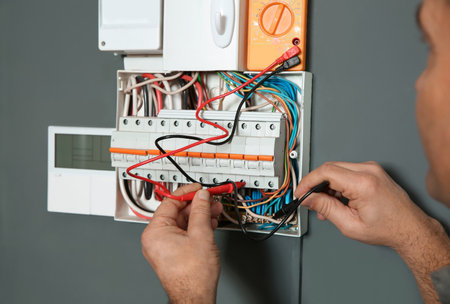Mastering the Art of Domestic Electrical Installation: A Comprehensive Guide

In the modern world, where technology seamlessly integrates into our everyday lives, a reliable and efficient domestic electrical installation is not just a luxury; it’s a necessity. From powering our homes to charging our devices, electricity plays a pivotal role in our daily routines. Understanding the nuances of domestic electrical installation is essential for homeowners, electricians, and anyone involved in the construction industry. In this comprehensive guide, we will delve into the essential aspects of domestic electrical installation, ensuring that you are well-informed and equipped to handle any electrical project.
1. Understanding the Basics
Before delving into the complexities of domestic electrical systems, it’s crucial to grasp the fundamentals. This includes knowledge about voltage, current, resistance, circuits, and safety protocols. A sound understanding of these basics forms the foundation upon which all domestic electrical installations are built.
2. Safety First: The ABCs of Electrical Safety
Safety is paramount in any electrical installation project. This section will outline the necessary safety precautions, personal protective equipment (PPE), and safe working practices. It will also cover the importance of grounding, circuit protection devices, and the safe use of tools and equipment.
3. Types of Wiring Systems
There are various wiring systems used in domestic electrical installations, including conduit wiring, surface wiring, and concealed conduit wiring. Each has its own advantages and applications. This section will provide an in-depth comparison of these systems, helping you choose the most suitable one for your specific needs.
4. Components of a Domestic Electrical System
Explore the essential components of a domestic electrical system, such as switches, outlets, circuit breakers, and distribution boards. Learn about the different types of switches and outlets available in the market, their installation procedures, and troubleshooting common issues related to these components.
5. Planning Your Electrical Layout
Proper planning is the key to a successful domestic electrical installation. This section will guide you through the process of creating an efficient electrical layout for your home. It will cover aspects such as load calculation, circuit planning, placement of outlets and switches, and adherence to local electrical codes and regulations.
6. Step-by-Step Installation Guide
Follow a detailed step-by-step guide for installing a basic domestic electrical system. From installing a circuit breaker to wiring outlets and switches, this section will provide clear instructions and helpful tips to ensure a smooth installation process.
7. Troubleshooting and Maintenance
Even a well-installed electrical system can encounter issues over time. Learn how to troubleshoot common electrical problems, identify faulty components, and perform regular maintenance tasks to ensure the longevity and efficiency of your domestic electrical installation.




